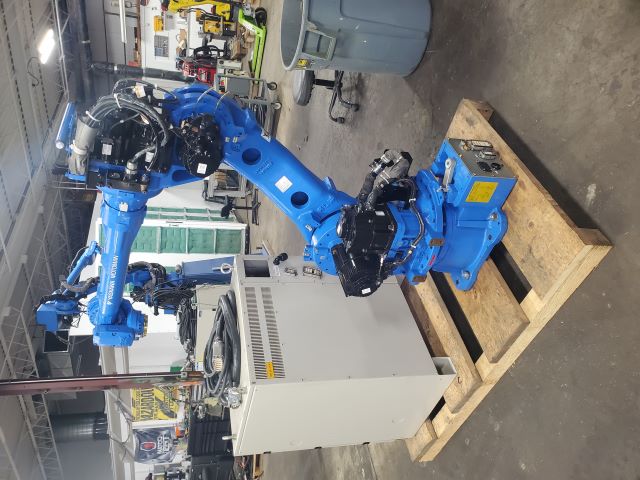Advantages of Robotic Grinding

Grinding is a finishing process that is used in many industries to smooth parts by removing excess or rough material. It is an application that takes great skill and precision. Manual grinding is a taxing process that is prone to inconsistencies. Many manufacturers have transitioned from manual grinding to robotic grinding. Automating grinding with the FANUC M-20ia and other material removal robots provides many advantages that will optimize the application.
- • Better Part Quality - Part quality will significantly improve with robotic grinding. Manual grinding is prone to errors and inconsistencies. Workers cannot replicate their work with each part or control how much force they apply. Over-grinding and undercutting are common errors with manual grinding that cause defects and poor quality. Articulated robots are programmed to follow application paths which allow for greater accuracy. The Yaskawa MH80 and other industrial robots can control the amount of force to which abrasives are applied to parts, ensuring all parts are uniform. The programmed control of factory robots eliminates errors and creates consistent high-quality products.
- • Higher Productivity - Productivity will increase with robotic grinding. Robotic manipulators operate at much faster speeds than humans are capable of. They are also consistent in their operation with no distractions or breaks in between parts. Industrial robot arms can operate around the clock without stoppages. Higher uptime with faster cycle runs increases throughput for significant productivity gains. Robotic automation allows manufacturers to be able to keep up in periods of high demand with their speed and efficiency.
- • Reduced Costs - Robotic grinding will also reduce production costs. Replacing workers with the ABB IRB 2600-20 for grinding applications will lower labor costs. The accuracy and consistency of grinding robots mitigates errors helping to reduce material waste and the rate at which abrasives are used, driving down material costs. With robotic grinding manufacturers can achieve a quick ROI through significant cost savings. Fewer expenses provide manufacturers with the potential for significant profit growth.
- • Safer Work Environment - Implementing grinding six axis robots will reduce workplace accidents and injuries to create a safer work environment. Grinding exposes workers to hazards such as dust, fumes, and high noise. The repetitive operation of grinding equipment can be quite strenuous on workers leading to injuries. Worker accidents and injuries can disrupt operations and cause significant production delays. Robot manipulators are designed to handle such hazards, keeping operations running smoothly and making factory floors safer.
- • Consistent Labor - Grinding is a very demanding and hazardous job which makes it undesirable to workers. Workers can easily become burnt out resulting in high turnover. Robotic automation can resolve turnover and labor shortages. Industrial robotic arms are a consistent and reliable source of labor. Companies do not have to deal with employee burn out and labor shortages with the FANUC M-710ic/50. Manufacturing robot arms are a long-term labor solution.
- • Less Waste and Rework - The accuracy of robots will reduce material waste and the use of abrasives. Robots are incredibly consistent in their operation which reduces the likelihood of errors, scrapped parts, and rework. The use of consumable such as abrasives becomes predictable allowing for better budget and material planning.
Robots Done Right is the place to start when it comes to used robots. Contact us if you are interested in buying or selling a used robot.